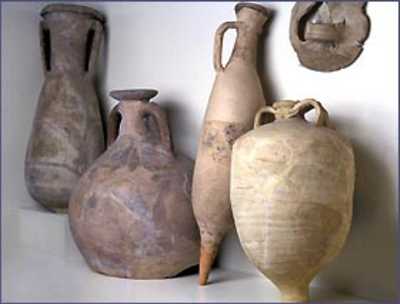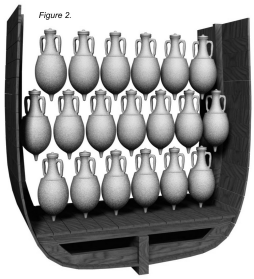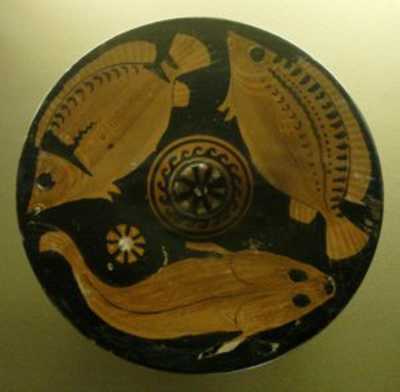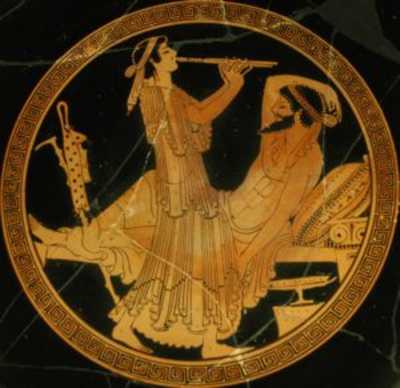
AUGUST 2007
garum!!

Marinades and sauces were very
important in ancient Roman cuisine. Among them, the garum:
it was a salty, aromatic, fish-based sauce. It was so
popular that several kinds of amphorae were dedicated
exclusively to garum commerce.The two-handled
jars, with narrow necks, were about three feet long
and were of various shapes, usually pointed or rounded on
the bottom (Figure 1). The pointed bottoms allowed large
numbers of amphorae to be stacked upright in rows in the
hold of ships (Figure 2). The bottom rows were placed in
wooden supports or embedded in sand. Dunnage, such as
twigs and branches or straw, was stuffed between the jars
in the upper rows.

The
Romans prepared many kinds of garum using fatty
fishes, like sardines, mackerels, eels, but also fish
entrails and bowels. The different kinds were called
garum, muria, oxygarum, liquamen etc.
The Romans called hallex a different sauce,
prepared picling fish entrails, not yet liquid.
During the I Century B.C. the best garum came from Cartagena region (Spain): the producers joined in an important organization that exported the well-known brand called Garum Sociorum.
In a large pot they added dried,
strong flavoured herbs: oregano, savory, mint, myrtle,
cumin, dill, rosemary, sage and others, sometimes adding
also onions and salted capers.
Then a layer of fresh fishes (whole if small, chopped if
large) and over this, a layer of marine salt 2-3cm thick.
They repeated the layers until the pot was full.
Then, they sealed the pot and left it resting in the sun
for a week.
In the following three weeks the sauce was mixed daily;
then it was was squeezed and filtered, and the liquid garum
poured in jars and amphorae.

The taste of the garum was in some way similar to a very strong, salty and dense Worcestershire sauce, or to a sardine paté.
The garum was the base of a
number of recipes: for exemple, the Romans were very fond
of mussels cooked in a sauce made mixing garum,
strong wine, savory, cumin and chopped onion.
